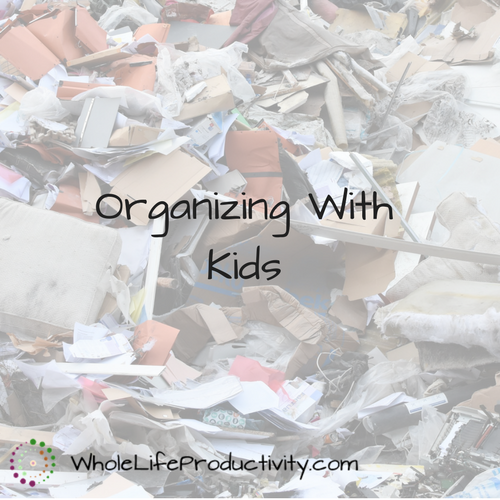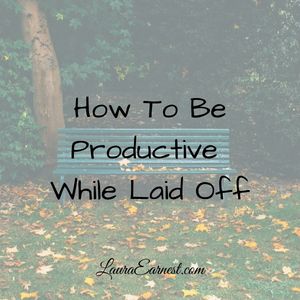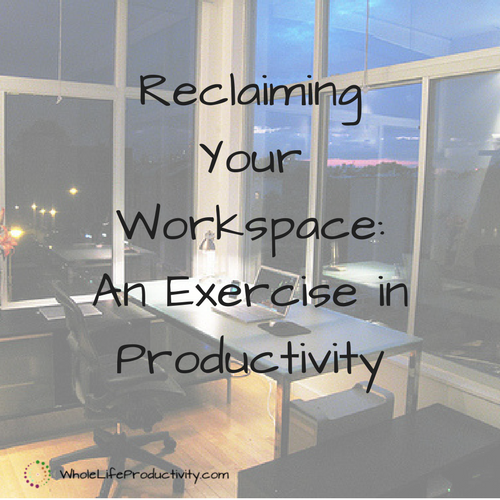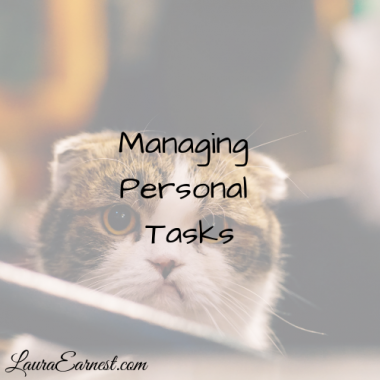
Organizing With Kids
Kids don’t come with an owner’s manual. And most of them are not naturally organized and tidy. Letting them live in slob-ville is very tempting, I know. But as parents, we are tasked with raising functional adults. And that means teaching them how to organize.
I am not naturally organized. I learned it at the hand (and at the bitter end of the tongue) of my mother. My daughter thinks it’s natural, and doesn’t even want to try. Yet we have been working with getting and keeping her organized for most of her life.
BTW, don’t think that teaching your kids to be organized and tidy is a one-time thing. It’s an ongoing process that needs to be revisited at every stage of development.
Start ‘Em Young
If a child is old enough to pull out a toy, he is old enough to put it back. You don’t want to just jumble everything together, or he’ll be overwhelmed when it comes time for play and won’t play with anything that he has to dig for. The memory of a small child is such that he won’t remember the toy unless he sees it. So how do you help him get it in the right place so he can find it again?
This one is actually fun and easy. Take pictures of the toys and put them on the edges of easily accessible bins. That way he matches the toy with the bin, and can see what his choices are as well.
Super-organized hint: if your child has an overabundance of toys, put away a large amount of them and rotate them in and out. It keeps everything fun.
Designated Dump Zones
It’s really hard for a child to remember that she needs to hang up a coat, put away shoes, unpack backpack and lunch bag and hand over papers when she walks in the door. Chances are she’s hungry and needs a snack, and a long list of tasks is too much for a young mind to remember. Enter the dump zone.
This is organization by camouflage. Allow the children to have the disorganized mess, but keep it out of sight.
For instance, having a bench with storage underneath by the door can help them put their stuff away. Or even a pretty basket. Have them put everything in one place (and make it easy). This develops the habits, and as they get older, you can work on expanding the unpacking of the dump.
(Hint: make sure that the lunch box doesn’t end up in the dump zone. Spoiled milk leaking over everything sucks. Trust me on this.)
Color Coordination
If you have a multi-child household, you can color coordinate. This gives you as the parent a way to distinguish which child needs help getting things where they want to be. Snack plates, glasses, towels, lunch boxes and backpacks can all be color coordinated. That way if Jimmy’s blue plate is in the living room you know to go to Jimmy to clean it up.
This does work…a friend of mine recently shared how her teenagers were put on this regimen after a spate of using several clean towels a day and then leaving them in a heap on the bathroom floor. After color coordination, my friend observed her teenage son running to his room with his appropriately colored washcloths held front and back because he had forgotten to hang up his towel.
Hostage Box
In the war against clutter, hostages can be taken. I wrote about an effective tool, the hostage box [Insert Link]. It really does work.
Help Them/Remind Them
As I said earlier, teaching kids to be organized is not a one-time thing. You will have to remind them so that they build up the habits. Don’t overwhelm them, and make it easier to be organized than not, and your efforts will pay off.
Summary
Organizing with kids is possible as long as you take it slow and make it age-appropriate.
Conclusion
Just the other day my daughter, after shoveling off her floor, said to me, “Mom, I like being in my room when everything is put away.” Major mom score!




